Today is another milestone in the life of Chewing the Fat. This is our first guest post! It’s not, however, the first appearance of its authors, my dear “cousins”, Sir John and Lady Martha Stracey. The bakers among you likely swooned over Lady Martha’s Austrian cookie recipes: https://chewingthefat.us.com/2011/12/three-authentic-austrian-cookie-recipes.html which have received a staggering 2931 page views making the post the second most popular in our history. Today, the Straceys share their family recipe for Seville Orange Marmalade. But before we get to that, how, you may wonder, did I end up ‘cousins’ with anyone in the British Aristocracy? Here’s the tale:
Our home in Montreal was like an Open House almost all the time. My parents loved to entertain. They had masses of friends from everywhere you could imagine. Particularly, there was sizable English contingent, friends made while both my parents served in World War II. My mother spent most of the war in London. My father was shipped off to Italy leaving my mother to mix and mingle and make lifelong friends. One of these was my godmother. Her heir was a young man who came out to go to McGill University. Whatever housing situation he’d worked out for himself, didn’t work for my mother who insisted he live with us. Which he did. For something like 5 years. He was truly a member of the family and the best man at my wedding.
While in Montreal, Simon (now Sir John) met and married a glorious Austrian beauty named Martha Egger. My parents adored her. We all did. Through all the years she lived in Canada, she kept the Austrian traditions going including, most memorably, real candles on the family Christmas tree. After years in Canada, Simon and Martha and their two children, Nadja and Daniella, returned to England where they have all lived happily ever after.
Now this recipe is another annual family tradition, held down by Martha with the making of the marmalade, or ‘marmers’ as Simon calls it. The recipe is Martha’s late mother’s hence the “Nach Oma’s Art”. Apparently it’s high season for Seville oranges in Britain and the perfect time to break this out. You will note that Simon has given you a most detailed recipe with directions for every step of the process. After all, he did study engineering at McGill. Here’s the recipe with great thanks to Sir John and Lady Martha:
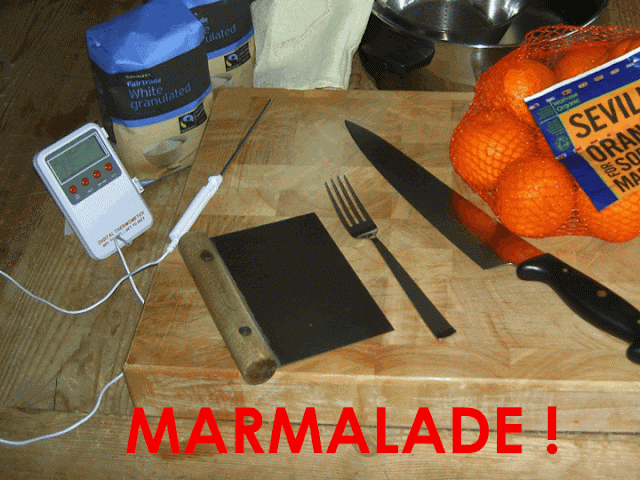
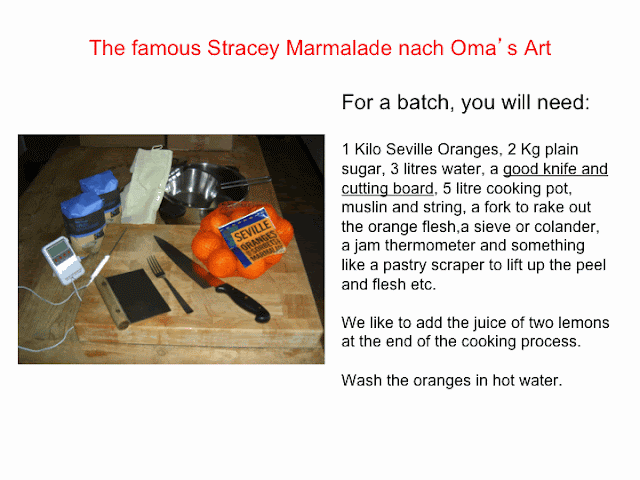
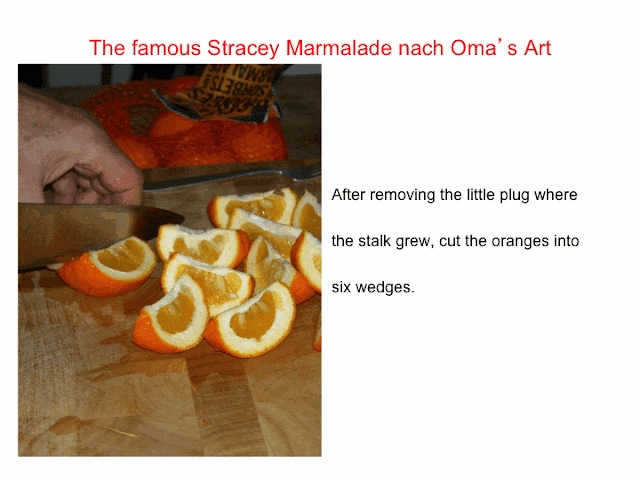
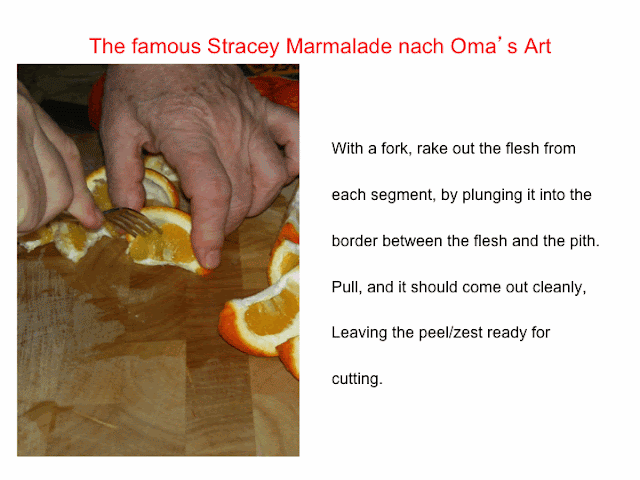
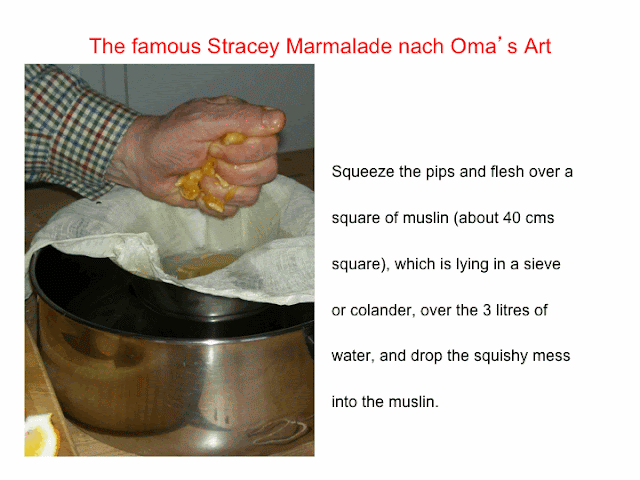
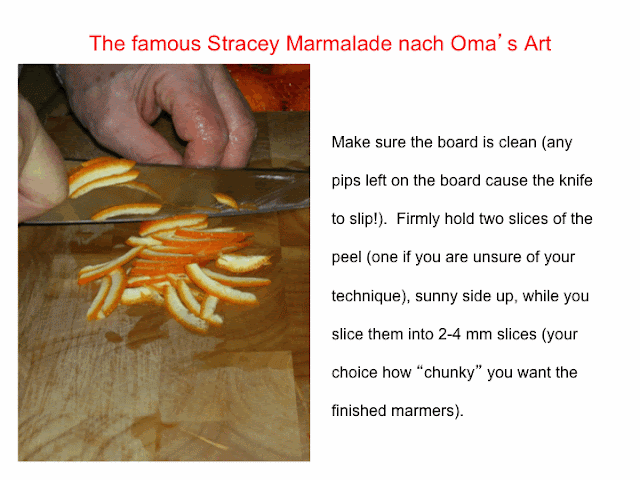
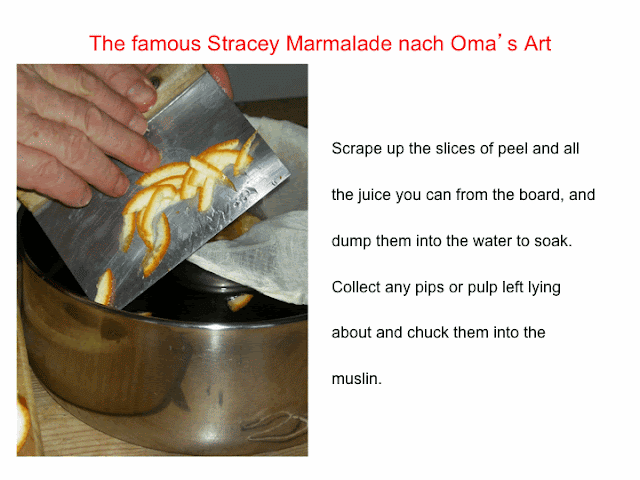

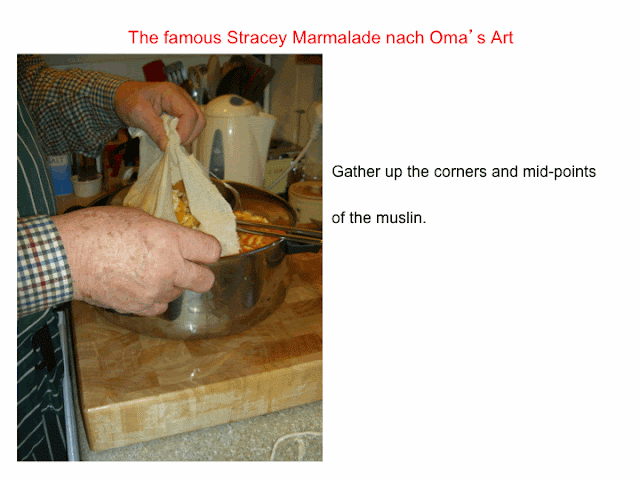


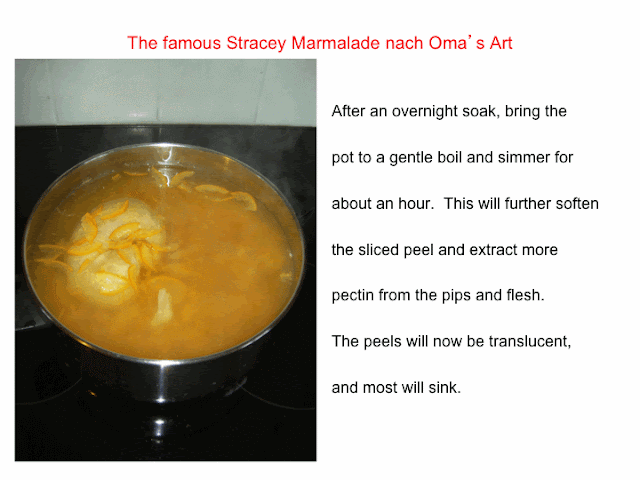


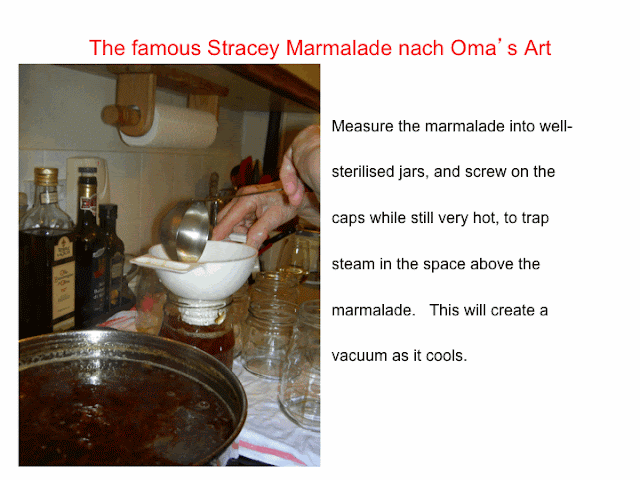
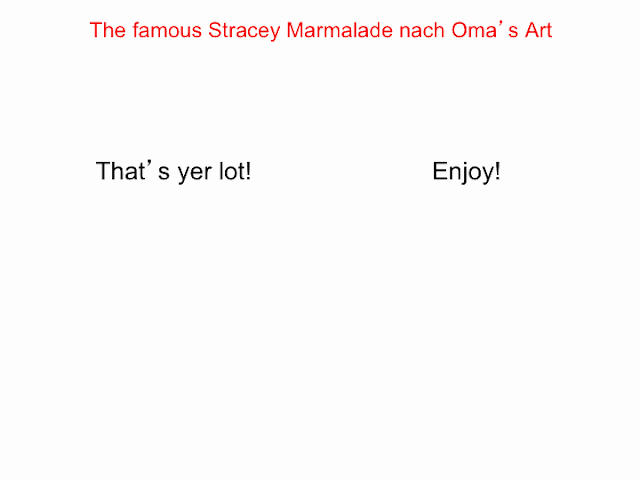
Thank you for making this look so easy and FUN! Preserving anything is a bit intimidating to some but you've managed to make it look very enticing.
Great pics!
Thanks for the post and welcome aboard!!
Katie
How sweet of your to write. I am trying to wrangle a response from the Stracey's. But I know they'll be thrilled with your very kind message. All best, Monte
Dear Katie, please forgive me for apparently taking so long to respond to your kind message. I did try before, using my email address as an identifier URL, but the system clearly didn't allow it. So, here I am, as "anonymous", with details included. So glad you appreciated our treatise on marmers. As you know, there are many different methods for making the stuff. We happen to like the 1-2-3 long soak process. It allows you to cut the full thickness of the peels exactly as you want the finished product to be (some people boil the whole fruit and then dismember and slice it). It requires the rather lengthy soaking and re-boiling steps to soften the peels. Should you ever decide to bite the bullet and make a batch yourself, we also have the recipe as printed in our Stracey Family Cookbook, a longer, chatty version of the process, a covering background note and A.A.Milne's poem "The King's Breakfast" from which we extract a couple of verses for our back labels. You are very welcome to any of these files if you are a real glutton for punishment and can stand more wise words on the subject. Right now, our shelves are groaning with about 40 large pots of this year's production, just finished and ready for labelling. Join the club and get slicing and squidging (by the way, a really sharp PROPER chef's knife and a heavy duty cutting board are essential, and keep that thumb and the pinky well tucked in, or you could end up aith a visit to the vet). With our warmest regards, Simon and Martha Stracey [email protected]